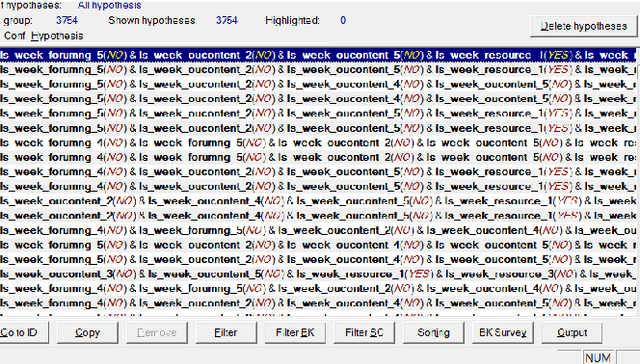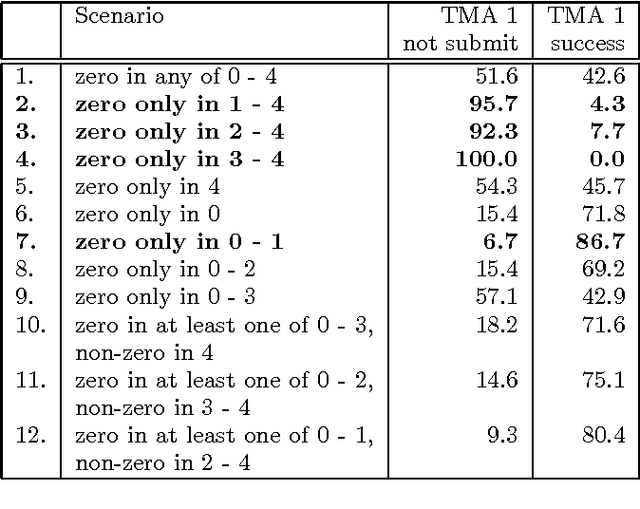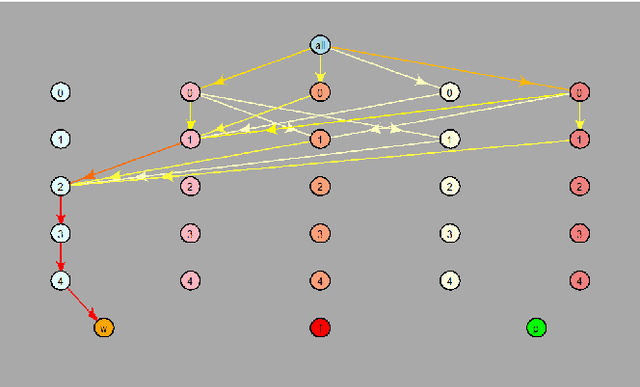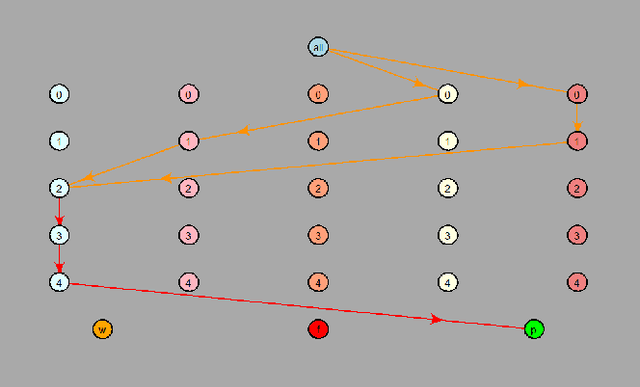Modelling student online behaviour in a virtual learning environment
Paper and Code
Nov 09, 2018



In recent years, distance education has enjoyed a major boom. Much work at The Open University (OU) has focused on improving retention rates in these modules by providing timely support to students who are at risk of failing the module. In this paper we explore methods for analysing student activity in online virtual learning environment (VLE) -- General Unary Hypotheses Automaton (GUHA) and Markov chain-based analysis -- and we explain how this analysis can be relevant for module tutors and other student support staff. We show that both methods are a valid approach to modelling student activities. An advantage of the Markov chain-based approach is in its graphical output and in the possibility to model time dependencies of the student activities.
 Add to Chrome
Add to Chrome Add to Firefox
Add to Firefox Add to Edge
Add to Edge